Are Mitsubishi cars truly as bad as some claim? This is a common question, and at CARS.EDU.VN, we’re here to provide an honest and comprehensive analysis. While Mitsubishi has faced challenges in the automotive market, focusing on reliability, value, and potential reasons for past struggles, we can understand what’s next for Mitsubishi automobiles. Explore with us at CARS.EDU.VN as we delve into Mitsubishi’s performance, reliability ratings, and consumer perceptions.
1. A Look at Mitsubishi’s Performance: Sales Data and Market Position
Mitsubishi’s journey in the U.S. market has been a roller coaster. It’s essential to examine the numbers to get a clear picture of their performance. Let’s delve into the sales data and market position of Mitsubishi.
- Sales Fluctuations: Mitsubishi’s U.S. sales have seen significant ups and downs. For instance, there was a notable increase in sales, around 25% led by the Mirage economy car.
- Historical Context: In 2000, Mitsubishi ranked No. 4 among Asian brands, trailing only Toyota, Honda, and Nissan. This strong position makes the current sales figures even more striking, illustrating the brand’s decline.
- Current Standing: Compared to other entry-level Asian brands, Mitsubishi’s sales lag considerably. This indicates that the brand has lost ground in a competitive market.
These trends highlight the need to understand the factors contributing to Mitsubishi’s sales performance.
Close-up view of the 2024 Mitsubishi Outlander showcasing its front-end design and styling.
2. The “Momentum 2030” Plan and Potential Mergers: What’s on the Horizon?
Mitsubishi has announced plans to revitalize its operations through “Momentum 2030.” Also, there’s also talks about the automaker joining forces with Honda and Nissan. These developments could significantly impact Mitsubishi’s future in the U.S. market.
- “Momentum 2030”: This plan signals Mitsubishi’s intent to make a comeback. It includes strategies for improving sales, enhancing brand image, and introducing new models.
- Potential Merger: A merger between Honda and Nissan could offer Mitsubishi access to shared resources and technologies. However, it could also lead to product rationalization initiatives that might affect Mitsubishi’s U.S. operations.
- Survival Concerns: The success of Mitsubishi’s U.S. operations hinges on how these plans unfold. It remains to be seen whether the brand can regain its footing in the competitive automotive landscape.
These strategic initiatives are crucial for Mitsubishi’s survival and potential resurgence in the U.S.
3. Teaming Up with Chrysler: A Missed Opportunity or a Necessary Step?
In the early 1970s, Mitsubishi entered the U.S. market by partnering with Chrysler Corporation. Rebadged Mitsubishi vehicles were sold through Dodge and Chrysler-Plymouth dealerships. Some argue that this partnership was a strategic misstep that prevented Mitsubishi from establishing a strong brand identity and independent dealer network.
- Early Partnership: Mitsubishi’s initial foray into the U.S. involved selling vehicles through Chrysler’s dealer network.
- Alternative Strategies: Unlike Toyota, Nissan, and Honda, Mitsubishi didn’t establish its own brand and dealer network from the outset. This is thought to have hindered its ability to create a strong U.S. presence.
- Delayed Independence: Mitsubishi didn’t begin selling cars under its own brand until 1982, more than a decade after its rivals. By then, the competition had already gained a significant advantage.
The decision to partner with Chrysler had long-term implications for Mitsubishi’s brand development and market positioning.
A vintage advertisement for the 1972 Dodge Colt, highlighting its features and appeal to consumers.
4. Mitsubishi’s Golden Years and Subsequent Decline: Key Factors
Mitsubishi experienced a period of success from 1999 to 2003, averaging over 300,000 units sold per year in the U.S. However, sales plummeted in subsequent years, dropping to less than 54,000 units in 2009. Several factors contributed to this decline.
- Peak Performance: The years 1999-2003 represented Mitsubishi’s most successful period in the U.S. market.
- Sales Collapse: After 2003, Mitsubishi’s sales declined sharply, reaching a low point in 2009.
- Reckless Financing: Mitsubishi’s financing arm aggressively pursued sales by providing loans to credit-risky buyers. This led to financial instability and tarnished the brand’s reputation.
- Recall Scandal: A recall cover-up scandal in Japan further damaged Mitsubishi’s reputation in the U.S., eroding consumer trust.
These factors combined to create a perfect storm that led to Mitsubishi’s decline.
5. Overextension and “Me-Too” Products: Spreading Resources Too Thin
One of the key missteps in Mitsubishi’s strategy was trying to compete directly with Toyota, Nissan, and Honda across all model segments. Mitsubishi simply lacked the resources to sustain such a broad product lineup, leading to a dilution of focus and quality.
- Direct Competition: Mitsubishi attempted to match Toyota, Nissan, and Honda model for model.
- Resource Constraints: The automaker lacked the financial and technological resources to compete effectively across all segments.
- Marginal Player: Even at its peak, Mitsubishi remained a marginal player compared to the “Big Three” Japanese automakers.
- Model Performance: Individual models like the Galant, Eclipse, and Lancer failed to achieve the sales volumes necessary to support competitive designs.
By trying to be everything to everyone, Mitsubishi spread its resources too thin and failed to excel in any particular segment.
6. The Subaru Success Story: Focusing on Niches
Subaru faced similar challenges in the late 1980s when it tried to compete directly with larger Japanese automakers. However, Subaru learned from its mistakes and shifted its strategy to focus on niche markets.
- Initial Struggles: Subaru experienced a significant drop in sales in the late 1980s and early 1990s.
- Strategic Shift: Subaru refocused on a narrow range of all-wheel-drive vehicles.
- Niche Dominance: This strategy allowed Subaru to establish a strong position in the all-wheel-drive market.
- Sales Growth: From 2009 to 2019, Subaru’s sales more than tripled, demonstrating the success of its niche-focused approach.
Subaru’s success highlights the importance of identifying and dominating niche markets rather than trying to compete head-on with larger rivals.
[
7. Hyundai and Kia’s Rise: Late Entry Can Be Successful
Hyundai and Kia entered the U.S. market later than Mitsubishi, yet they managed to establish themselves as almost full-line brands. Their success demonstrates that late entry is not necessarily a barrier to success if executed effectively.
- Late Entrants: Hyundai and Kia both entered the U.S. market after Mitsubishi.
- Initial Struggles: Hyundai initially faced quality issues that hindered its sales growth.
- Rapid Growth: Both Hyundai and Kia eventually surpassed Mitsubishi in sales, achieving significant growth in the U.S. market.
- Full-Line Brands: Hyundai and Kia established themselves as almost full-line brands, offering a wide range of models to compete in various segments.
Hyundai and Kia’s success underscores the importance of product quality, strategic marketing, and effective execution in achieving market success.
8. Quality and Reliability Issues: Consumer Perceptions
Consumer perception plays a vital role in the success or failure of any automotive brand. Mitsubishi has faced challenges in terms of perceived quality and reliability, which have impacted its brand image and sales.
- Perceived Quality: Mitsubishi vehicles have sometimes been perceived as lacking the same level of quality and refinement as their competitors.
- Reliability Concerns: Some Mitsubishi models have faced reliability issues, leading to negative consumer reviews and ratings.
- Brand Image: Perceptions of poor quality and reliability have tarnished Mitsubishi’s brand image, making it difficult to attract and retain customers.
- Impact on Sales: Negative consumer perceptions have contributed to lower sales volumes and market share for Mitsubishi.
Addressing quality and reliability concerns is essential for Mitsubishi to rebuild its brand image and regain consumer trust.
9. Design and Innovation: Standing Out in a Crowded Market
In a crowded automotive market, it’s essential for brands to differentiate themselves through innovative design and technology. Mitsubishi has faced challenges in this area, struggling to create vehicles that stand out from the competition.
- Lack of Differentiation: Some Mitsubishi models have been criticized for lacking distinctive design elements or innovative features.
- “Me-Too” Products: By focusing on “me-too” products, Mitsubishi has struggled to capture the attention of consumers looking for something unique and different.
- Technological Lag: Mitsubishi has sometimes lagged behind its competitors in terms of adopting and implementing new technologies.
- Missed Opportunities: The brand has missed opportunities to create iconic or groundbreaking vehicles that could have elevated its brand image.
Focusing on design innovation and technological leadership is crucial for Mitsubishi to create vehicles that capture the imagination of consumers.
10. Marketing and Branding: Communicating Value to Consumers
Effective marketing and branding are essential for communicating a brand’s value proposition to consumers. Mitsubishi has faced challenges in this area, struggling to create a clear and compelling brand message.
- Inconsistent Messaging: Mitsubishi’s marketing messages have sometimes been inconsistent or unclear, making it difficult for consumers to understand the brand’s identity.
- Lack of Brand Awareness: Compared to its competitors, Mitsubishi has lower brand awareness among U.S. consumers.
- Missed Opportunities: The brand has missed opportunities to create memorable advertising campaigns or sponsorships that could have increased brand visibility.
- Digital Marketing: Mitsubishi’s digital marketing efforts have sometimes lagged behind those of its competitors, failing to effectively reach and engage online consumers.
Investing in effective marketing and branding initiatives is crucial for Mitsubishi to create a strong brand identity and communicate its value proposition to consumers.
[
11. The Alliance with Renault and Nissan: A New Hope?
In 2017, Mitsubishi entered into a “strategic partnership” with Renault and Nissan. This alliance has provided Mitsubishi with access to shared platforms, technologies, and resources, offering a potential pathway to revitalization.
- Shared Platforms: The alliance has allowed Mitsubishi to utilize shared platforms, such as the Nissan Rogue’s platform for the Outlander sport-utility vehicle.
- Economies of Scale: Mitsubishi hopes to achieve economies of scale through the alliance, reducing costs and improving profitability.
- Technology Sharing: The partnership provides Mitsubishi with access to advanced technologies developed by Renault and Nissan.
- Potential Synergies: The alliance could create synergies in areas such as manufacturing, purchasing, and marketing.
The alliance with Renault and Nissan represents a potential turning point for Mitsubishi, offering opportunities for growth and revitalization.
12. Mitsubishi’s Current Lineup: Strengths and Weaknesses
A critical aspect of evaluating Mitsubishi’s standing is assessing its current vehicle lineup. Understanding the strengths and weaknesses of the models on offer provides insight into the brand’s potential for attracting and satisfying customers.
| Model | Strengths | Weaknesses |
|---|---|---|
| Outlander | Stylish design, available plug-in hybrid variant, spacious interior | Some reliability concerns, less refined than competitors |
| Outlander Sport | Affordable price point, compact size for urban driving | Outdated design, limited cargo space |
| Eclipse Cross | Unique styling, available all-wheel drive | Divisive design, limited rear headroom |
| Mirage/Mirage G4 | Excellent fuel economy, low price | Underpowered engine, basic features |

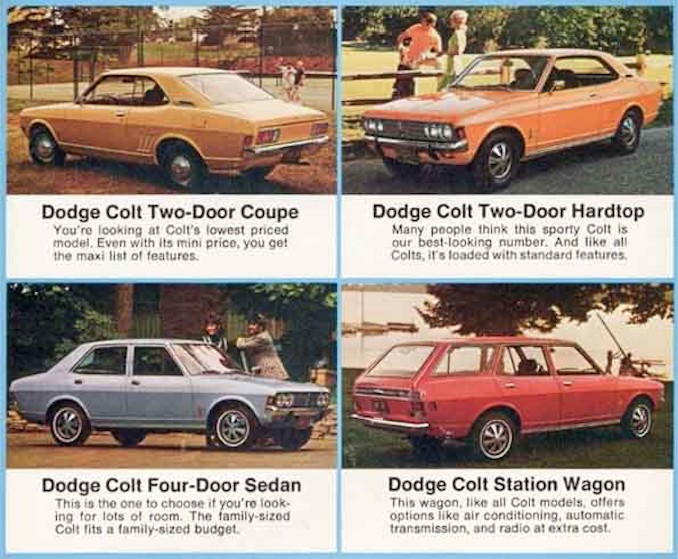
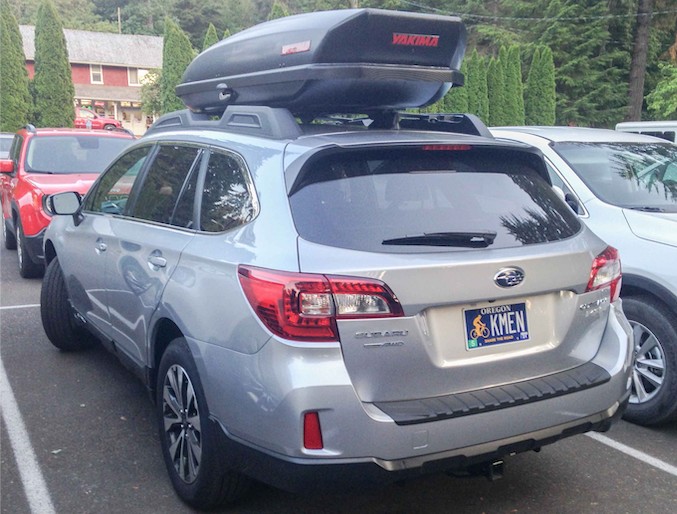
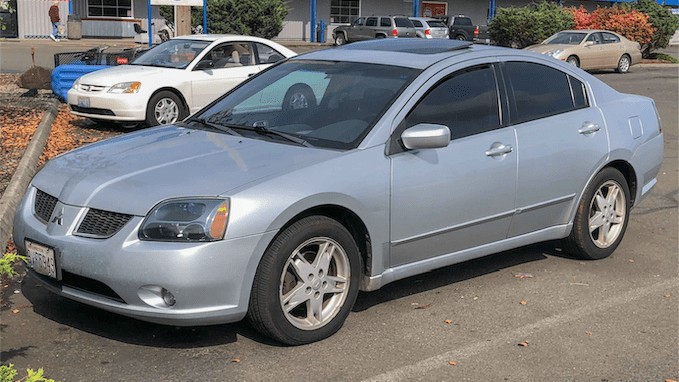
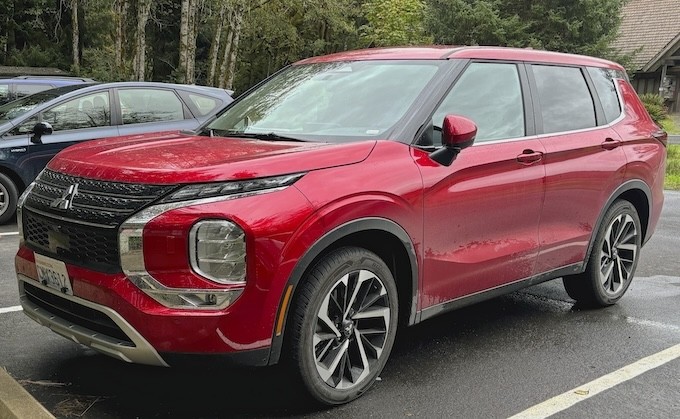
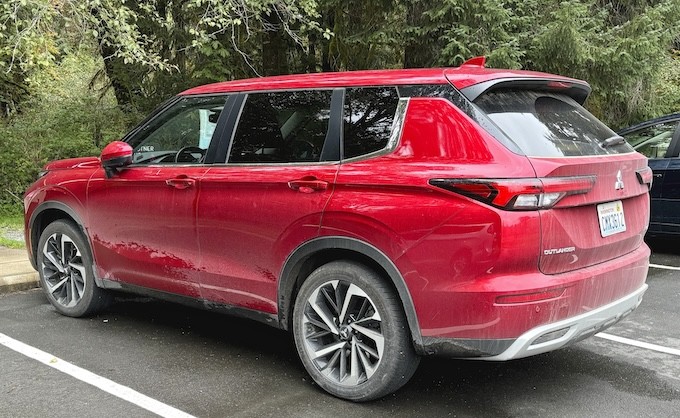
By understanding the strengths and weaknesses of its current lineup, Mitsubishi can make informed decisions about product development and marketing.
13. Mitsubishi’s Resale Value: A Key Consideration
Resale value is an important factor for car buyers, as it affects the overall cost of ownership. Mitsubishi vehicles have traditionally struggled with resale value compared to some of their competitors.
- Depreciation Rates: Mitsubishi vehicles tend to depreciate more quickly than some other brands, resulting in lower resale values.
- Factors Influencing Resale Value: Factors such as brand perception, reliability, and demand influence a vehicle’s resale value.
- Impact on Ownership Costs: Lower resale values can increase the overall cost of ownership for Mitsubishi vehicles.
- Strategies for Improvement: Mitsubishi can improve its resale values by enhancing product quality, strengthening its brand image, and offering attractive incentives.
Addressing resale value concerns is essential for Mitsubishi to attract and retain customers.
14. Expert Reviews and Ratings: What the Critics Say
Expert reviews and ratings provide valuable insights into the strengths and weaknesses of Mitsubishi vehicles. Consulting these sources can help consumers make informed purchasing decisions.
- Reliability Ratings: J.D. Power and Consumer Reports provide reliability ratings for various Mitsubishi models. These ratings can help consumers assess the long-term dependability of Mitsubishi vehicles.
- Performance Reviews: Automotive publications such as Car and Driver, Motor Trend, and Road & Track offer performance reviews of Mitsubishi vehicles. These reviews provide insights into handling, acceleration, and overall driving experience.
- Consumer Feedback: Websites such as Edmunds and Kelley Blue Book provide consumer reviews and ratings of Mitsubishi vehicles. These reviews offer real-world perspectives on ownership experiences.
- Overall Scores: Aggregators such as U.S. News & World Report compile expert reviews and ratings to provide overall scores for Mitsubishi vehicles.
Analyzing expert reviews and ratings can help consumers make informed decisions about purchasing Mitsubishi vehicles.
15. Maintenance and Repair Costs: A Long-Term Perspective
Maintenance and repair costs are important considerations for car buyers. Understanding the long-term costs associated with owning a Mitsubishi vehicle can help consumers budget accordingly.
- Average Maintenance Costs: RepairPal provides estimates of average maintenance costs for various Mitsubishi models. These estimates can help consumers understand the typical costs associated with routine maintenance.
- Common Repair Issues: Identifying common repair issues can help consumers anticipate potential maintenance needs and costs.
- Warranty Coverage: Understanding Mitsubishi’s warranty coverage can provide peace of mind and protect against unexpected repair costs.
- DIY Maintenance: Performing some maintenance tasks yourself can help reduce overall maintenance costs.
Considering maintenance and repair costs is essential for making informed decisions about owning a Mitsubishi vehicle.
16. The Future of Mitsubishi: Electric Vehicles and New Technologies
The automotive industry is rapidly evolving, with electric vehicles (EVs) and new technologies playing an increasingly important role. Mitsubishi’s future success hinges on its ability to adapt to these changes and embrace innovation.
- Electric Vehicle Strategy: Mitsubishi has announced plans to introduce new electric vehicles in the coming years.
- Plug-in Hybrid Technology: The Outlander Plug-in Hybrid demonstrates Mitsubishi’s commitment to plug-in hybrid technology.
- Autonomous Driving: Mitsubishi is exploring autonomous driving technologies and may introduce self-driving features in future models.
- Connectivity: The brand is focusing on improving connectivity features in its vehicles, such as smartphone integration and over-the-air updates.
Embracing electric vehicles and new technologies is crucial for Mitsubishi to remain competitive in the evolving automotive landscape.
[
17. Mitsubishi’s Global Presence: A Broader Perspective
Understanding Mitsubishi’s global presence provides a broader perspective on the brand’s strengths, weaknesses, and strategic priorities.
- Global Sales: Mitsubishi sells vehicles in numerous markets around the world, including Asia, Europe, and South America.
- Key Markets: Southeast Asia is a particularly important market for Mitsubishi, where the brand has a strong presence.
- Manufacturing Footprint: Mitsubishi has manufacturing facilities in various countries, including Japan, Thailand, and Indonesia.
- Strategic Partnerships: The alliance with Renault and Nissan has expanded Mitsubishi’s global reach and influence.
Analyzing Mitsubishi’s global presence provides valuable insights into the brand’s overall strategy and performance.
18. Alternatives to Mitsubishi: Exploring Other Options
For car buyers considering Mitsubishi, it’s important to explore alternative brands and models that offer similar features and value.
- Toyota: Toyota is known for its reliability, durability, and strong resale value.
- Honda: Honda offers a range of fuel-efficient and reliable vehicles with a reputation for quality.
- Subaru: Subaru specializes in all-wheel-drive vehicles and offers a unique blend of performance and practicality.
- Mazda: Mazda is known for its stylish designs and sporty driving dynamics.
- Hyundai: Hyundai offers a range of affordable and well-equipped vehicles with a focus on value.
- Kia: Kia provides stylish and feature-rich vehicles with a long warranty.
Exploring these alternatives can help consumers make informed purchasing decisions and find the best vehicle for their needs.
19. The Mirage: A Case Study in Affordability
The Mitsubishi Mirage is one of the most affordable new cars on the market. Its focus on affordability makes it an interesting case study in the challenges and opportunities of the budget car segment.
- Low Price Point: The Mirage’s primary selling point is its low price, making it attractive to budget-conscious buyers.
- Fuel Efficiency: The Mirage offers excellent fuel economy, helping to reduce long-term ownership costs.
- Basic Features: The Mirage is equipped with basic features, but lacks some of the advanced technologies and amenities found in more expensive cars.
- Target Market: The Mirage targets first-time car buyers, students, and those seeking affordable transportation.
The Mirage’s success demonstrates the continued demand for affordable transportation options in the U.S. market.
20. Mitsubishi’s Comeback Strategy: A Realistic Assessment
Mitsubishi’s “Momentum 2030” plan signals the brand’s intent to make a comeback in the U.S. market. It’s vital to make a realistic assessment of Mitsubishi’s chances for success, considering the challenges it faces and the opportunities it has.
- Challenges: Mitsubishi faces challenges in terms of brand perception, product quality, and competition from established rivals.
- Opportunities: The alliance with Renault and Nissan offers opportunities for cost savings, technology sharing, and access to new markets.
- Focus on Niches: Mitsubishi may find success by focusing on niche markets and offering unique products that differentiate it from the competition.
- Electric Vehicles: Embracing electric vehicles and new technologies could help Mitsubishi attract new customers and improve its brand image.
Whether Mitsubishi can successfully execute its comeback strategy and regain its footing in the U.S. market is yet to be seen.
[
FAQ: Addressing Common Questions About Mitsubishi Cars
Let’s address some frequently asked questions about Mitsubishi cars.
- Are Mitsubishi cars reliable?
- Reliability varies by model. Check expert reviews on CARS.EDU.VN for specific vehicle ratings.
- What is Mitsubishi’s strongest selling point?
- Affordability, particularly with models like the Mirage. CARS.EDU.VN offers comparisons to similar models.
- How does Mitsubishi’s resale value compare to other brands?
- Historically, it’s lower. CARS.EDU.VN has guides to maximizing resale value.
- Is Mitsubishi investing in electric vehicles?
- Yes, with plans for new EVs. Keep up with developments on CARS.EDU.VN.
- How does the Renault-Nissan-Mitsubishi alliance benefit Mitsubishi?
- Shared platforms and technologies. CARS.EDU.VN breaks down the alliance’s impact.
- What are some common problems with Mitsubishi cars?
- Specific issues vary by model. CARS.EDU.VN has model-specific problem guides.
- Are Mitsubishi parts expensive?
- Costs vary. CARS.EDU.VN offers tips on finding affordable parts and service.
- Does Mitsubishi offer a good warranty?
- Check the latest warranty details on CARS.EDU.VN to compare with competitors.
- Is Mitsubishi a good car for families?
- The Outlander is a popular choice. CARS.EDU.VN provides family-friendly car reviews.
- Where can I find a trusted Mitsubishi mechanic?
- CARS.EDU.VN can help you locate reputable service providers in your area.
Conclusion: Making an Informed Decision about Mitsubishi
So, are Mitsubishi cars “bad”? The answer is complex. While the brand has faced challenges, it also offers affordable options and is working to revitalize its lineup. As always, we recommend that you to do your own research, test drive several vehicles, and consider your own needs and preferences.
At CARS.EDU.VN, we are committed to providing you with the information you need to make informed decisions about all things automotive. Whether you’re looking for detailed reviews, reliability ratings, or tips on maintenance and repair, we’ve got you covered.
Want to learn more and find the best car for your needs? Visit cars.edu.vn today. Find reliable service at 456 Auto Drive, Anytown, CA 90210, United States or contact us on Whatsapp: +1 555-123-4567.